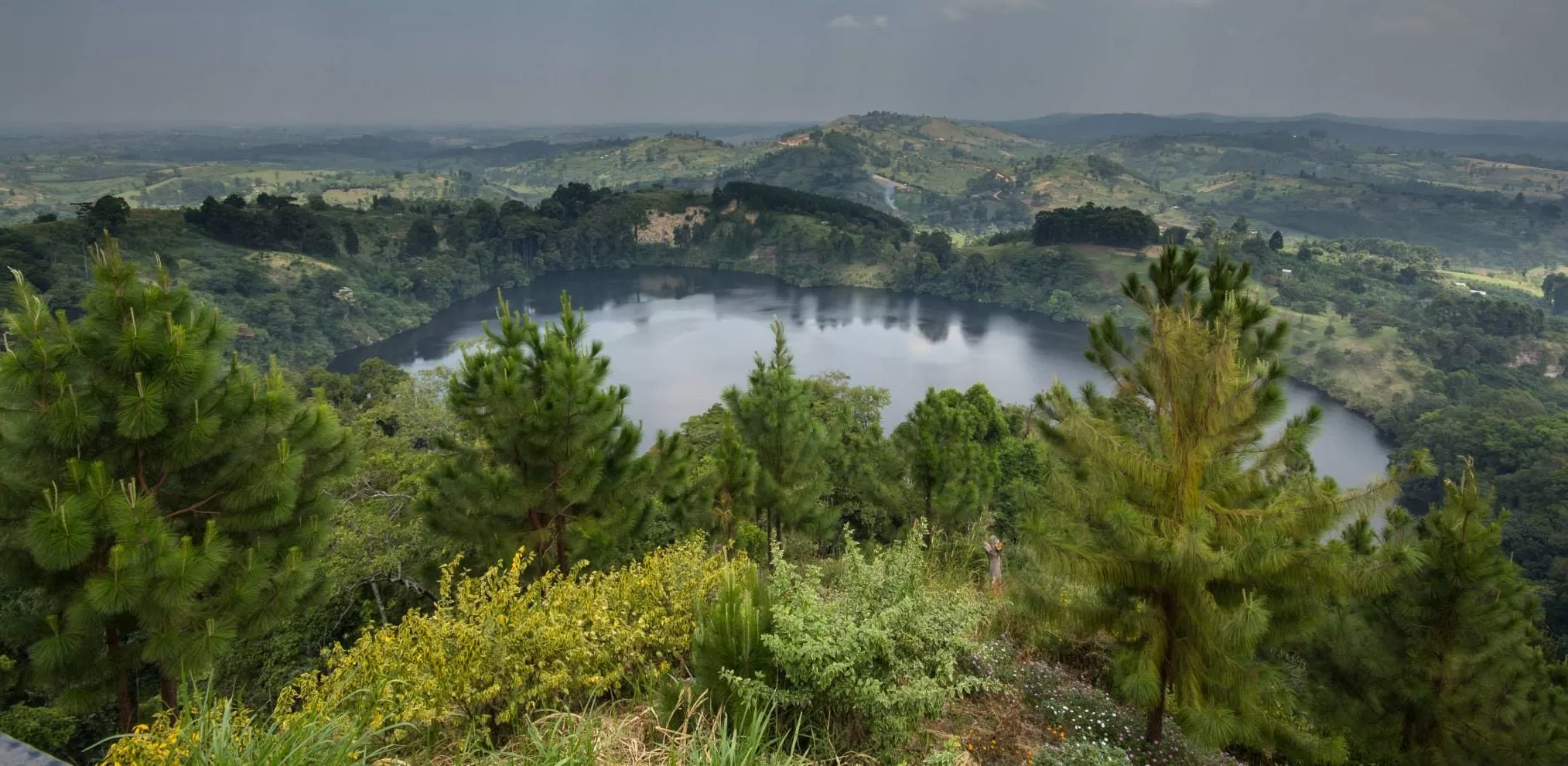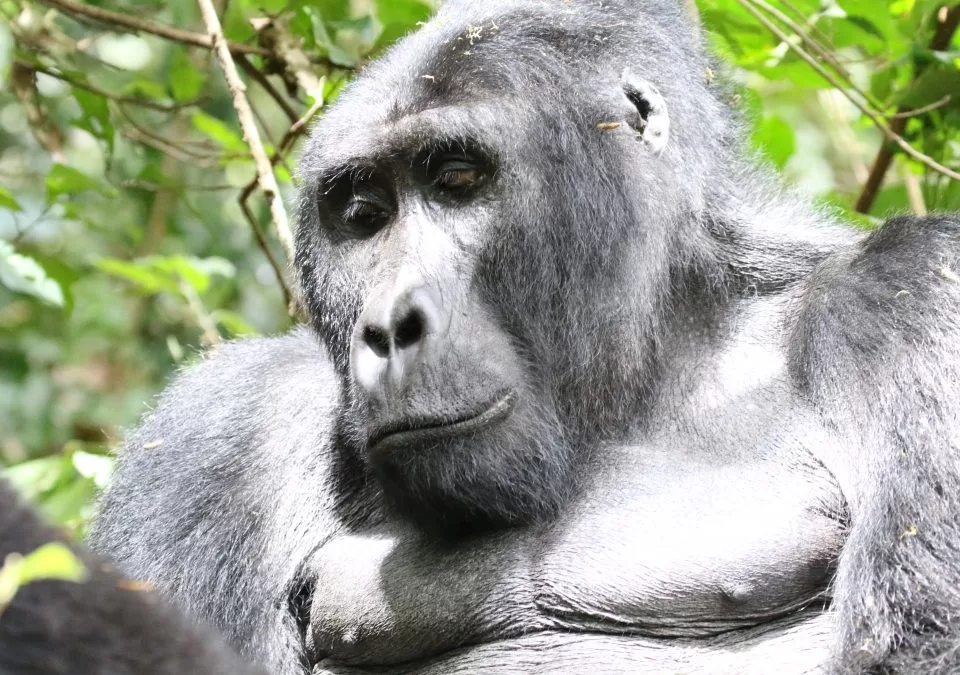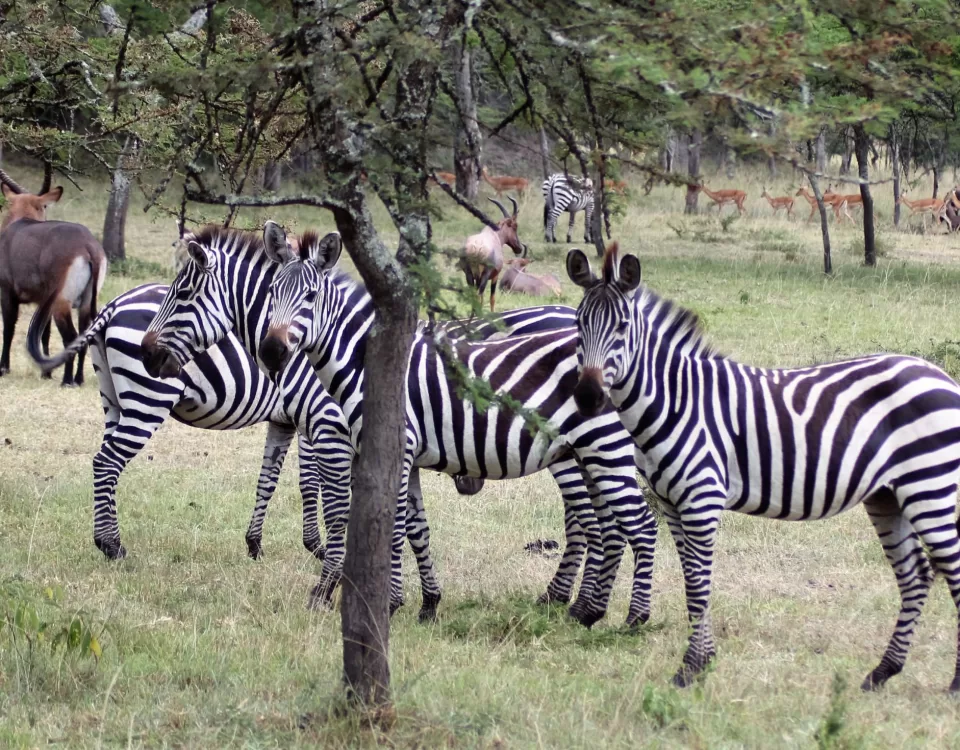
Things to see and do at Queen Elizabeth National Park
Queen Elizabeth National Park covers 1978 sq km and is one of the best parks to visit in Uganda for wildlife safaris. It was established in 1952 and named Kazinga National Park, in 1964, it was changed to Queen Elizabeth National Park after Queen Elizabeth II visited. An exclusive tour of Queen Elizabeth National Park can take 5 days as there are about 95 mammals within the park and the big four can be viewed. These include; about 5000 hippos in the park, probably the highest concentration in East Africa, about 10,000 cape buffaloes, about 3000 elephants, 10 primate species, and about 619 bird species.
Things to see and do in the park
Wildlife game drives
Queen Elizabeth National Park has game tracks through Kasenyi, the North Kazinga Plains, and the Ishasha Sector and offers both day and evening game drives. The Kasenyi tracks have herds of Uganda kobs and lions that prey on them. Other animals include; buffaloes, antelopes, sitatungas, and elephant sightings, along with warthogs and baboons. The company of an experienced guide in the early morning or evening is the most successful way to maximize game viewing sessions at the park.
Boat cruise along Kazinga Channel
The Kazinga Channel is a 40km natural water channel that links Lake Edward to Lake George. It is a 2- 4 hours daily boat cruise with two sessions starting at 11:00hrs and at 14:00hrs. There is a knowledgeable guide who will brief you about the animals spotted along the cruise. Get a chance to view a variety of mammal species that include; elephants, crocodiles, monitor lizards, buffaloes, waterbucks, and bushbucks. For bird lovers, the channel is a must-visit as it has numerous bird species close to the shore.
Hiking in Queen Elizabeth NP
There is nothing quite like taking a stroll surrounded by nature. Queen Elizabeth NP has got a variety of walking and hiking trails in Maramagmabo Forest, Kyambura Gorge, Along the Ishasha River, Along the explosive crater lakes, Along the Mweya Peninsula for Mongoose tracking. This hiking and nature walk offer opportunities for viewing primates, animal species, bird species, butterfly species, plants, and tree species. They can take between 1-6 hours with guides allocated to you.
Game safari in Ishasha tree-climbing lions
The southern part of Queen Elizabeth NP is Ishasha Sector famed for its tree-climbing lions. Ishasha sector is 2 hours drive away from Kasenyi/ Mweya Peninsular mainly characterized by Savannah grasslands with Sycamore fig trees and Albizia trees. There are 4 prides of lions and about 150 individuals estimated in the sector. Ishasha plains are also a habitat for elephants, buffaloes, and topis among others. There are 2 main game circuits, the north and south loop which can be explored for chances of viewing the tree-climbing lions. Sundowners and bush breakfasts can be arranged as well.
Bird watching
Queen Elizabeth NP is classified as an Important Birding Area (IBA) by Birding International. There are about 619 bird species found in the park making it a birder’s haven. The species include water birds, woodland, and forest dwellers in the Maramagambo and Kyambura Gorge Forest, 54 raptors, and various migratory species. For the best birding in Queen Elizabeth National Park, below are the best spots to visit.
Along the 34km shoreline of Kazinga Channel, Kasenyi Area, Mweya Peninsula, Maramagambo Forest, Ishasha Sector, Lake Kikorongo, Katunguru Bridge area, and Katwe Area. The bird species include the Grey-headed Kingfisher, Collard Pratincole, African Jacana, Pin-tailed Whydah, Martial Eagle, Gabon, Slender-tailed Nightjars, the lovely Black-headed Gonolek, Great and Long-tailed Cormorants, Common Squacco Heron, Papyrus Gonolek among others.
Maramagambo Forest
If you are interested in nature walks and hiking, Maramagambo forest is the spot to visit. The forest is bordered by Lake Nyamusigiri and Lake Kyasanduka a habitat for primates among which are the chimpanzees, and plenty of monkey species like the black and white colobus, red-tailed vervet, and the L’hoest monkey. Bird watchers are in for a delight as there are about 250 bird species within the forest and along Lake Nyamusigiri. Other activities in this forest are nature walks that last from 1-6 hours, and visiting the bat cave that also has resident rock pythons.
Kyambura Wildlife Reserve
This reserve is separated from the Queen Elizabeth NP by the Kyambura Gorge and the Kazinga Channel. There are a variety of bird species habitats in the reserve among which are the greater and lesser flamingos. It is also a good spot for exploring the scenic crater lakes like Lake Bagusa and Lake Maseche all saline in nature in addition to being habitats of a variety of water birds.
Chimpanzee tracking in Kyambura Gorge
Kyambura Gorge forms a border between the Queen Elizabeth NP and Kyambura Wildlife Reserve. The gorge also known as the ‘Valley of the Apes’ is a habitat of the chimpanzees. There are about 19 individuals habituated in the gorge and chimpanzee trekking sessions start at 8 am and 2 pm on a daily basis though sightings are not guaranteed. However, the descent into the 100 meters deep gorge is one of the fascinating experiences of the visit. If you are focusing on chimpanzee trekking, then we do recommend Kalinzu Forest Reserve and Kibale Forest National Park.
Kalinzu Forest Reserve
Kalinzu Forest Reserve is 45 minutes drive from Queen Elizabeth NP and is one of the best spots to track chimpanzees and the age limit is 12 years old. There are about 300 chimpanzees among which 40 individuals are habituated by Japanese researchers. There are also 6 other primates like the Blue monkeys, Black and White monkeys, Red-tailed colobus monkeys, l’hoest monkeys, Bushbabies, Galagos, and Pottos monkeys, and about 370 bird species.
Mongoose tracking
This is a 3-hour activity done along the Mweya peninsula overlooking the kazinga channel learning about the banded mongoose. There are about 450 individuals in 10 social groups and together with the researchers using locator devices, you will learn about their habituation calls, record their weight, identify some of them, monitor their behaviors and all these details will be added to the researcher’s database.
Lion experiential project
This activity is done with the researchers at the park either early morning or in the evening. The experience lasts between 1-3 hours and allows visitors to actively participate in monitoring the pride in the park, using locator devices and learning habituation calls, as well as monitoring weather, surroundings, and behavior. The results are added to researchers’ databases, contributing valuable information to the overall understanding of wildlife ecology, and helping to conserve this wonderful ecosystem.
Katwe explosive crater drive
For geological lovers, watch what volcanic activity created along the Albertine Rift Valley along the 27 km drive between the Kabatoro gate and the Queen’s pavilion. Take in the sight of Lake Katwe Salt Works along the Lake Katwe Salt tour learning more about salt mining from the local community. You will get a chance to view the Rift Valley Escarpment, Lake George, Mountain Rwenzori, and the Kazinga Channel along the drive.
Leopard village
This is located in the village of Muhokya and is one of the community-based development initiatives of the local community and the Uganda Carnivore Program. The partnership is between the Muhokya, Kahendero, Hamukungu, and the Uganda Carnivore Program with support from global partners. The aim of the project within Queen Elizabeth NP is to promote the conservation of wildlife and culture through eco-tourism. Get to learn more about the traditions and the way of life of the Bakonzo, Banyabindi, and Basongora ethnic groups through traditional dances and songs, handicrafts made, and visiting local schools.
For more information about tours to Queen Elizabeth National Park, please contact us at info@travelerslinkafrica.com





